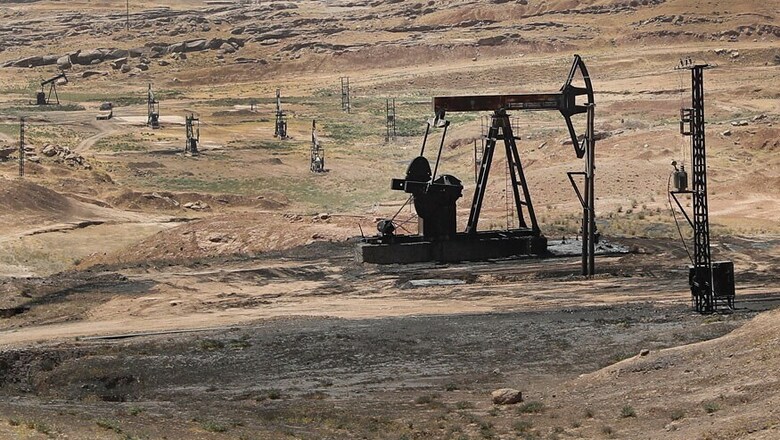
views
Beirut: US-backed fighters captured Syria's largest oil field from the Islamic State group Sunday, marking a major advance against the extremists in an area coveted by pro-government forces.
With IS in retreat, the Kurdish-led Syrian Democratic Forces and the Syrian government have been in a race to secure parts of the oil-rich Deir el-Zour province along the border with Iraq.
The Al-Omar oil field was a major source of income for the militant group and is considered one Syria's most productive. The condition of the field, which has been controlled by IS for three years, was not clear following intense coalition and Russian airstrikes.
The SDF, with air support from the U.S.-led coalition, said it captured the field in a "swift and wide military operation." It said some militants have taken cover in oil company houses nearby, where clashes are underway. The U.S.-led coalition confirmed the SDF had retaken the oil field.
After coming under heavy fire from IS, pro-government forces retreated from the area around Al-Omar field, according to the Britain-based Syrian Observatory for Human Rights. The SDF said government forces were 3 kilometers (2 miles) away from the fields.
Syrian troops, backed by Russian warplanes and Iranian-sponsored militias, have retaken nearly all of the provincial capital of Deir el-Zour, as well as the town of Mayadeen, another IS stronghold, which is across the Euphrates River from the Al-Omar field.
The SDF focused their operations in rural Deir el-Zour on the eastern side of the river, and have already seized a major natural gas field and other smaller oil fields.
IS captured Al-Omar in 2014, when the group swept across large areas in Syria and neighboring Iraq. At the time, the field was estimated to produce around 9,000 barrels a day. Its current potential is unknown.
Syria had proven oil reserves of 2.5 billion barrels as of 2015, giving it the largest supply among its neighbors after Iraq. The oil industry was a pillar of the Syrian economy before the conflict in 2011.
As IS advanced in Syria, it seized control of most of Syria's oil fields and made petroleum a major earner for the militant group, which sold it on the black market to other insurgents and the Syrian government.
Since the coalition began operations against IS in 2014, the militants' oil production has been reduced from a peak of approximately $50 million per month to currently less than $4 million, the coalition said in a statement to The Associated Press.
The government lost the al-Omar field to other insurgents in 2013.
Al-Manar TV, operated by Lebanon's Hezbollah, said the fight for Al-Omar was still underway and denied the SDF's claim to have captured it. The militant group fights alongside Syrian President Bashar Assad's forces.
The official Syrian news agency said troops regained full control of Khosham, a town on the eastern side of the Euphrates River that they lost a day earlier to IS. The Observatory for Human Rights said parts of the town remain contested.
It's not clear how Syrian troops will respond to the SDF's seizure of Al-Omar. Assad has vowed to eventually bring all of Syria back under government control.
The two sides have accused each other of firing on their forces in Deir el-Zour province, but a rare face-to-face meeting of senior U.S. and Russian military officers last month appeared to have calmed tensions.
Syria observers have said the race between the US-backed fighters and the Russian- and Iranian-backed Syrian government forces is likely to be a source of direct confrontation in the absence of a political agreement.
IS has suffered a series of major setbacks in recent months, including the loss of the Syrian city of Raqqa, once the extremists' self-styled capital, and the Iraqi city of Mosul. Most of the territory the group once held has been seized by an array of Syrian and Iraqi forces.
An estimated 6,500 IS fighters remain in eastern Syria and western Iraq, many concentrated along the Euphrates River valley straddling the border, the U.S. military said last week.


















Comments
0 comment